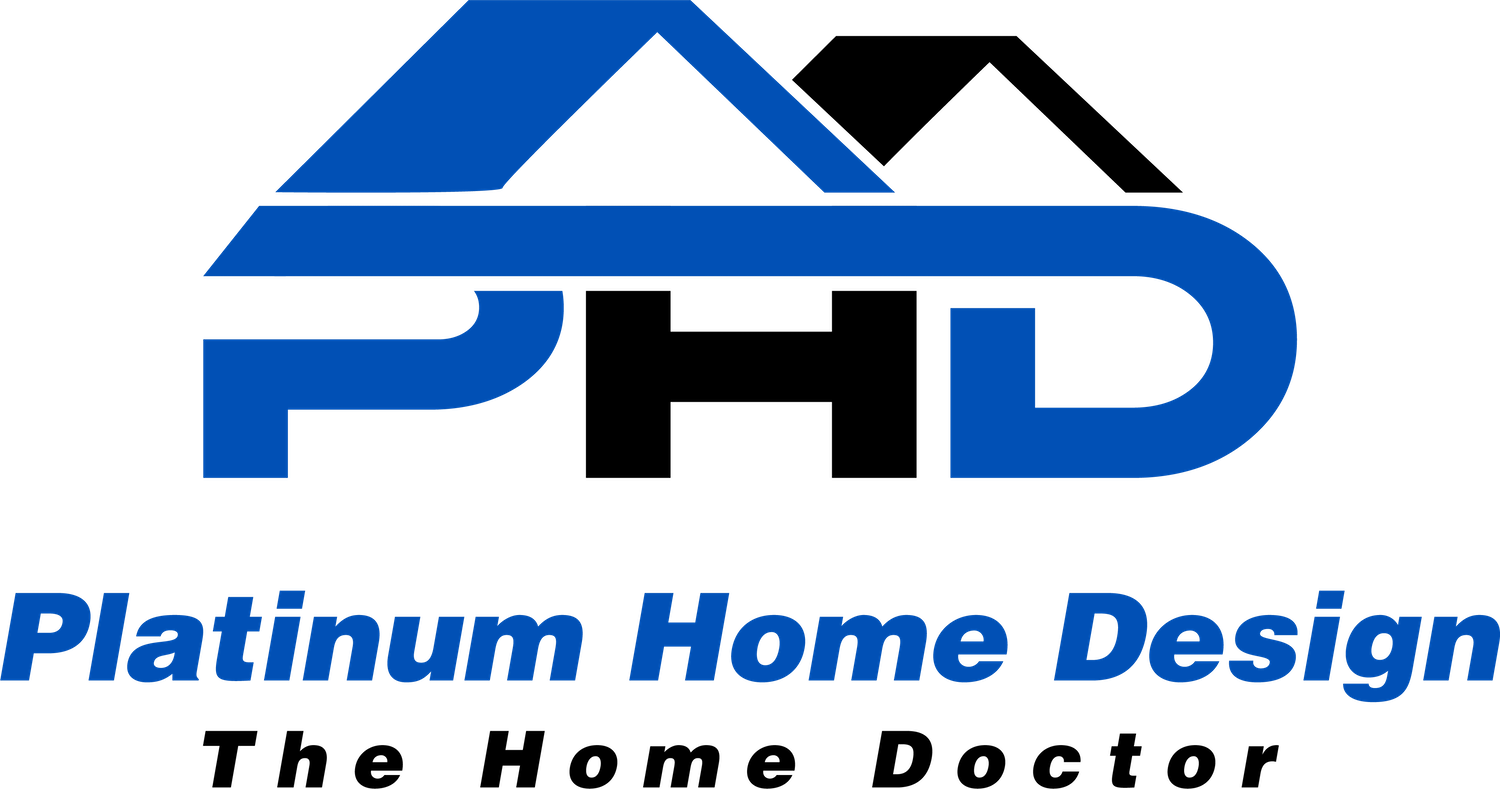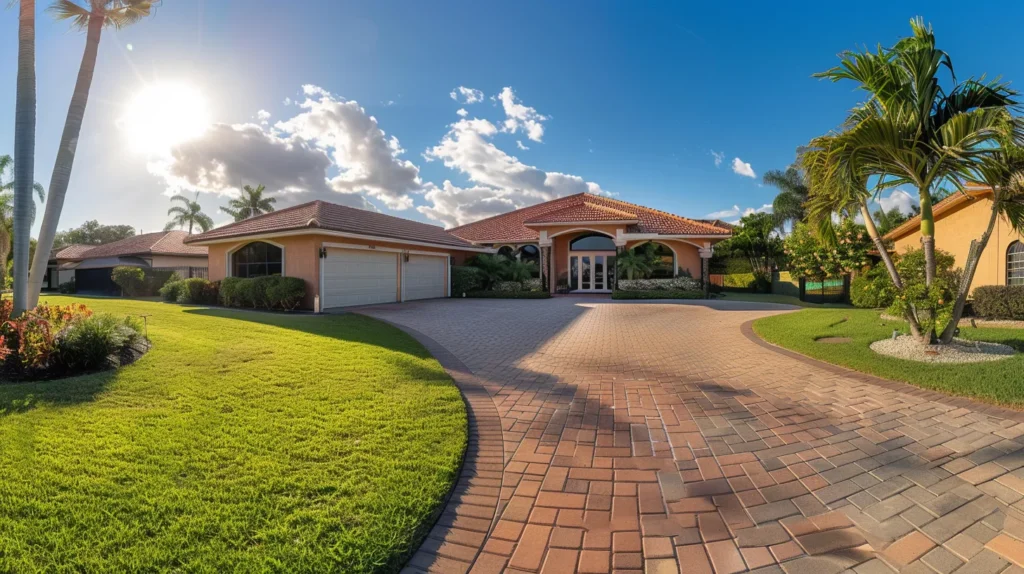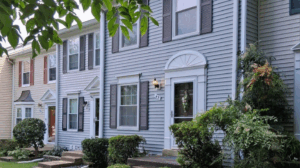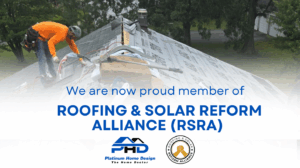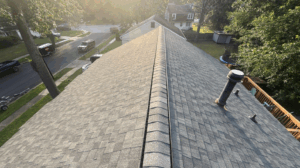Optimal Frequency for Roof Inspections: Key Insights for Homeowners
Is it time for your roof inspection? Many homeowners overlook this essential task until problems arise, often due to extreme weather conditions. This post will clarify the optimal frequency for roof inspections and highlight signs that indicate when an inspection request becomes necessary. By understanding how often to inspect and the benefits of proactive maintenance, you’ll protect your investment and significantly extend your roof’s lifespan. You will gain valuable insights into the importance of timely roof inspections, ensuring you stay ahead of potential issues, whether your roof is metal or features drywall interiors.
Key Takeaways
- Regular roof inspections help identify minor issues before they escalate into major repairs
- Inspecting after severe weather ensures any damage is addressed promptly to prevent long-term effects
- Well-maintained roofs enhance property value and curb appeal, making homes more attractive to buyers
- Documentation of inspections facilitates clear communication with contractors about repair needs and history
- Proactive maintenance supports a safe living environment by preventing issues like mold and water damage
Regular roof inspections are vital for ensuring the integrity of your home. Conducting a thorough roof inspection at least twice a year allows you to identify potential leaks and damage early, which can save you money on major repairs later.
If you have a metal roof, specific considerations apply. Inspecting your metal roof frequently helps you spot issues like rust or loose panels, preventing further deterioration of the exterior and maintaining your home’s value.
A comprehensive home inspection should include an evaluation of your roof. By incorporating roof inspections with other home inspection services, you gain a better understanding of your property’s overall condition and can address problems promptly.
In addition to scheduled inspections, pay attention to any signs of leaks or water damage after severe weather. Addressing issues immediately can prevent costly repairs and extend the lifespan of your roof, ensuring that your home remains safe and sound.
Roof inspections can save you from costly repairs down the road. Understanding their importance is key to maintaining a strong home.
Understanding the Importance of Roof Inspections
Regular inspections of your roof are essential in maintaining its integrity and minimizing long-term costs. Spotting roof damage early can prevent the need for costly roof replacement and help extend the lifespan of your structure.
Be mindful of the potential for mold growth if water leaks go undetected. Inspecting areas around your fireplace and other moisture-prone spots can help you identify vulnerabilities before they turn into significant problems.
Concrete roofing materials may require different inspection approaches compared to other types. Familiarizing yourself with the specific needs of your roof type can aid in preserving its condition and preventing deterioration.
It’s wise to schedule inspections after severe weather events. Look for signs of damage, such as missing shingles, to avoid unnecessary repairs and ensure your home remains safe and secure for years to come.
You now understand why roof inspections matter. Next, let’s consider how often you should have them done to keep your home safe and sound.
Recommended Frequency for Roof Inspections
To ensure the longevity of your roof, schedule inspections at least twice a year. This proactive approach allows you to catch minor issues before they escalate, potentially saving you the hassle and cost of extensive repairs later.
In addition to regular biannual checks, consider having a roofer inspect your roof after severe weather events. Heavy rain or strong winds can cause damage that may not be immediately visible but can lead to significant problems if left unaddressed.
Your current roofing materials may dictate a different inspection routine to maintain peak performance. Understanding these requirements can help you make informed decisions and communicate effectively with your roofing contractor about what to expect during scheduled inspections.
Prioritizing customer service when selecting a roofer is essential for a smooth inspection process. A reliable contractor will provide transparent communication, including any fees associated with their services, ensuring you receive quality care for your construction needs.
Choosing the right moment to inspect your roof can mean the difference between a simple fix and a costly repair. Let’s look at how often you should schedule these vital assessments to keep your home safe and sound.
Several factors influence how often you should schedule roof inspections. Seasonal considerations, such as changes in weather patterns and ventilation needs, play an important role. The age and condition of your roof are critical, as older materials may require more frequent checks. Additionally, environmental elements like severe weather can impact roof health, warranting timely evaluations to maintain your roofing system.
Factors Affecting Roof Inspection Frequency
Several factors can influence how often you should schedule roof inspections. Weather patterns play a significant role; for instance, if you live in an area prone to hail or heavy storms, increased inspections can help spot potential wear and tear from these elements. Understanding your roof’s material and age is also crucial; older roofs generally require more frequent evaluations to ensure effective roof maintenance and prevent unexpected issues.
Your roof’s overall condition is another key element affecting inspection frequency. Regular assessments can reveal hidden problems and minor damages that could worsen if left unattended. Ideally, routine inspections will provide peace of mind and contribute to extending the life of your roof, all while ensuring that your home remains protected from the elements.
Seasonal Considerations for Scheduling Inspections
Seasonal shifts greatly impact your roof’s condition, making it essential to schedule inspections at key times throughout the year. During spring, for instance, ensure that your drainage systems are clear of debris that can prevent proper water flow, which could lead to leaks and damage. After a heavy winter, checking for issues related to ice damming or the integrity of your vinyl siding is crucial to maintain the overall health of your home.
In the fall, it’s wise to perform a roof inspection to prepare for the winter months ahead. Focus on areas around vents and pipes where snow or heavy rain might create problems if not properly addressed. Understanding the costs associated with roof inspections can also help you budget; it’s often a small investment compared to the potential damage from neglect. By taking these seasonal considerations into account, you can extend the lifespan of your roof while ensuring your home remains safe and sound.
Age and Condition of Your Roof
The age and condition of your roof significantly influence how often you should schedule inspection services. As roofs age, they become more susceptible to issues such as damaged flashing or wear and tear from seasonal changes. Regular inspections can help you identify problems early, helping maintain the integrity of your roofing system and preventing costly repairs down the line.
Your attic is a critical area to monitor, especially in older homes where signs of wear may not be readily visible from the outside. Inspecting your attic regularly can reveal hidden leaks or ventilation issues that affect your roof’s performance. By prioritizing inspections based on your roof’s age and condition, you can ensure that your county’s building requirements are met while protecting your home for years to come.
Environmental Influence on Roof Health
Your roof is constantly exposed to various environmental factors that can influence its health and longevity. Storms, particularly those with strong winds, can damage shingles and loosen materials, making it essential for you to have a thorough evaluation by an inspector after severe weather events. By addressing these issues promptly, you can prevent further deterioration and protect the integrity of your entire home.
The condition of your roof can also be affected by its proximity to trees and walls that may trap moisture or debris. Regular evaluations of these surroundings can help identify potential problem areas, such as blocked drainage systems or overhanging branches, before they escalate into significant issues. Taking proactive steps ensures that your roof remains resilient against the elements and does not succumb to preventable damage.
| Environmental Factor | Potential Impact | Recommended Action |
|---|---|---|
| Storms | Damage to shingles and loosened materials | Inspect roof after severe weather |
| Wind | Increased wear and tear over time | Regular evaluations by an inspector |
| Walls | Moisture buildup and debris accumulation | Monitor drainage and clear obstructions |
| Trees | Blockages and falling branches | Prune overhanging branches |
You know when the sky darkens and the wind picks up; that’s when you pay attention. Watch for signs that your roof might be in trouble, and act before it becomes a bigger issue.
Signs Indicating You Need a Roof Inspection
Being aware of water stains or discoloration on your ceilings or walls is crucial. These signs often indicate roof leaks that require prompt attention to prevent further damage and costly roof repairs.
If you notice missing or damaged shingles, it’s time to schedule a roof inspection. Addressing these issues quickly can help preserve the integrity of your roof and reduce the need for extensive roof repair and replacement in the future.
Pay attention to the condition of your gutters and downspouts. If you observe granules from roofing materials, such as Owens Corning shingles, accumulating in your gutters, it may signal deterioration that needs immediate evaluation during a commercial roof inspection.
Regularly checking for signs of mold or mildew growth is also essential. These indications can reveal water intrusion problems that not only affect your roof but may also lead to health risks within your home.
Your roof protects your home, but signs of trouble can be subtle. Pay attention to the details; they may point to the need for a closer look.
After severe weather, it’s essential to inspect your roof for visible damage, including issues with your chimney or roof edges. Look for water stains on ceilings or walls, which often indicate leaks. Missing or damaged shingles and visible growth of algae or moss can also signal the need for professional inspections to maintain roof integrity and support the condition of your siding.
Regular evaluation of these conditions ensures accessibility to necessary repairs, protecting your home from potential damage. Recognizing these signs enables you to take proactive steps, securing your property long-term.
Visible Damage After Severe Weather
After severe weather events, it’s essential to check your roof for any visible damage. Look for missing shingles, cracks, or dents, as these issues can lead to leaks and further deterioration if not addressed promptly. Even minor damage can escalate quickly, resulting in extensive repairs, so it’s wise to act fast.
Be particularly vigilant around areas prone to water accumulation, such as valleys and edges. Water stains on your walls or ceilings may suggest underlying roof leaks that need immediate attention. By inspecting your roof after harsh weather, you can preserve its integrity and ensure your home remains safe from unexpected issues.
Water Stains on Ceilings or Walls
Water stains on your ceilings or walls are clear indicators that your roof may be compromised. These stains often result from leaks that allow water to penetrate your roof, leading to potential damage and increased repair costs. If you notice any discoloration or softness in these areas, it’s wise to schedule a roof inspection to identify and address the source of the leak before it worsens.
Ignoring these warning signs can lead to further issues, including mold growth and structural damage within your home. By addressing water stains promptly and scheduling regular roof inspections, you ensure the long-term integrity of your roof and maintain a safe living environment. Take action by consulting a professional to evaluate your roof and prevent further complications related to water intrusion.
Missing or Damaged Shingles
Missing or damaged shingles are often the most visible signs that your roof may require immediate attention. If you notice any shingles that are cracked, bent, or completely missing, it’s crucial to schedule a roof inspection without delay. These issues can compromise the integrity of your roofing system, leading to leaks and further damage to your home’s structure.
Addressing missing or damaged shingles promptly can save you from costly repairs down the line. Regular inspections will help you catch these problems early, ensuring that your roof remains in optimal condition. This proactive approach protects not just your roof but also the overall value of your home:
- Identify cracked or missing shingles.
- Schedule a roof inspection if shingles are damaged.
- Prevent leaks and further structural issues.
- Maintain the overall integrity of your roof.
Algae or Moss Growth on the Roof
Algae or moss growth on your roof is a sign that you may need to schedule a roof inspection. These growths not only diminish your roof’s aesthetic appeal but can also trap moisture, leading to potential leaks and underlying structural issues. If you notice green patches or dark streaks on your roofing materials, it’s time to take action to protect the integrity of your home.
Addressing algae or moss promptly can save you from more extensive damage and costly repairs in the future. Regular inspections, especially in humid or shaded areas where these growths thrive, can help you monitor your roof’s condition. Removing these growths and ensuring proper drainage will help maintain your roof’s lifespan and performance:
- Observe for green patches or dark streaks.
- Understand that these growths trap moisture.
- Schedule inspections to monitor growths regularly.
- Address the issue promptly to prevent damage.
If you’ve noticed any warning signs, it’s time to take action. Scheduling your roof inspection can safeguard your home from further damage.
Scheduling Your Roof Inspection
To ensure the longevity of your roof, it’s essential to find qualified inspectors who can evaluate its condition effectively. Setting up a maintenance plan tailored to your specific roofing materials will help you stay proactive. Additionally, identifying the best times of year for roof inspections can further enhance your home’s protection. Each of these aspects plays a vital role in maintaining your roof’s integrity.
Finding Qualified Inspectors
When seeking qualified inspectors for your roof, it’s essential to prioritize experience and reputation. Look for contractors who have substantial experience in roofing inspections and are well-versed in various roofing materials. Checking online reviews, asking for references, and confirming any certifications or licenses can provide you with the confidence that you are hiring a trusted expert to evaluate your home’s roof.
Understand that communication is key during this process. A reliable inspector should be responsive and willing to explain their findings in a clear manner. They should also provide a detailed report after the inspection, covering any issues found and recommended actions to maintain your roof’s integrity. This transparency ensures that you feel informed and empowered to address any necessary repairs promptly:
| Considerations for Finding Qualified Inspectors | Actions to Take |
|---|---|
| Experience and Reputation | Check online reviews and ask for references. |
| Communication Skills | Choose an inspector who provides clear explanations. |
| Detailed Reporting | Ensure you receive a comprehensive inspection report. |
Setting Up a Maintenance Plan
Establishing a solid maintenance plan for your roof is a critical step in ensuring its longevity. Begin by scheduling regular inspections at least twice a year, pairing these check-ups with the changing seasons to address potential issues proactively. This approach will help you identify minor repairs before they escalate, providing peace of mind and protecting your investment.
In addition to scheduled inspections, consider keeping a detailed record of your roof’s condition, including any repairs or maintenance performed. This documentation can facilitate communication with your roofing contractor during future inspections, ensuring they have a complete understanding of your roof’s history. By being organized and proactive, you will enhance your home’s durability and safeguard against unexpected roofing issues:
| Action Item | Description |
|---|---|
| Schedule Inspections | Arrange biannual roof inspections for seasonal maintenance. |
| Document Condition | Keep records of repairs and inspections for future reference. |
| Communicate with Contractors | Share maintenance history to ensure thorough evaluations. |
Best Times of Year for Roof Inspections
The best times of year to schedule your roof inspections are typically in the spring and fall. In spring, you can ensure that your roof is clear of winter debris and check for ice damage before the heavy rainfall begins. Fall inspections allow you to prepare your roof for winter, ensuring that your drainage systems are clear and that vents are secure against snow accumulation.
Additionally, schedule inspections after severe weather events, like storms or heavy winds. This will give you a chance to assess any potential damages before they lead to more serious issues. By being proactive and planning these inspections, you can protect the integrity of your roof and ultimately save on costly repairs:
- Schedule inspections in spring to clear winter debris.
- Conduct fall inspections to prepare for winter weather.
- After severe weather, look for damages to prevent escalation.
After you schedule your roof inspection, remember this: a well-maintained roof can spare you from costly repairs. Regular inspections hold unexpected benefits that can keep your home safe and sound.
Benefits of Regular Roof Inspections
Regular roof inspections play a crucial role in maintaining your home’s structure and prolonging the lifespan of your roof. By identifying issues early, you can prevent minor problems from escalating into significant repairs, which saves you money in the long run.
Investing in routine inspections helps you maintain your roof’s integrity, ensuring it withstands the effects of harsh weather conditions. This proactive approach not only protects your home but also enhances its overall value, providing you with peace of mind.
Regular assessments also allow you to catch signs of mold or water intrusion before they compromise your indoor air quality. Being vigilant about roof health contributes to a safe living environment for you and your family.
Establishing a maintenance schedule can significantly reduce the burden of unexpected repairs. By integrating roof inspections into your home care routine, you ensure the longevity of your roofing system and safeguard your investment:
| Benefit | Description |
|---|---|
| Cost Savings | Identifying issues early prevents expensive repairs. |
| Increased Home Value | Maintaining roof quality enhances overall property value. |
| Health Safety | Regular checks prevent mold and water intrusion. |
| Planned Maintenance | Establishing a schedule reduces unexpected repair burdens. |
Regular roof inspections offer peace of mind, ensuring your home remains safe and sound. Let’s look deeper into the specific advantages that these inspections bring to homeowners, safeguarding both property and investment.
Regular roof inspections provide essential cost-effective maintenance strategies, ensuring your home’s safety and comfort while also enhancing property value. By identifying minor issues early, you can avoid expensive repairs down the line. This proactive approach not only fosters a safe living environment but also maintains the aesthetic and monetary value of your property, making it crucial for homeowners to stay engaged with their roof’s health.
Cost-Effective Maintenance Strategies
Implementing cost-effective maintenance strategies can significantly enhance the lifespan of your roof. By performing regular inspections, you can quickly identify small issues, such as cracks or loose shingles, before they evolve into costly repairs. This not only saves you money but also provides peace of mind knowing that your roof remains in optimal condition to protect your home.
Another effective strategy is to keep accurate records of your roof’s health and maintenance history. This documentation allows you to efficiently communicate with your roofing contractor during inspections, ensuring they understand your roof’s specific requirements. By staying proactive and organized, you can make informed decisions that contribute to the long-term durability of your roof and safeguard your investment:
| Maintenance Strategy | Benefits |
|---|---|
| Regular Inspections | Identify small issues early, saving money on repairs. |
| Documentation | Facilitates informed communication with contractors. |
Ensuring Homeowner Safety and Comfort
Regular roof inspections play a critical role in ensuring your safety and comfort at home. A well-maintained roof protects against leaks and structural damage, which can lead to hazardous conditions like mold growth or compromised air quality. By proactively addressing potential issues, you not only safeguard your living space but also ensure a comfortable environment for your family.
When you make roof inspections a routine part of home maintenance, you contribute to a stable and secure atmosphere. Identifying and addressing small concerns before they escalate can save you from unnecessary disruptions and expenses. Your peace of mind grows knowing that your roof is in optimal condition, allowing you to focus on enjoying your home rather than worrying about potential repairs.
Improving Property Value Through Maintenance
When you prioritize regular roof inspections, you are effectively protecting and improving the value of your property. A well-maintained roof not only enhances curb appeal but also serves as a strong selling point for potential buyers. By addressing small issues before they develop into major problems, you prevent costly repairs that could deter potential customers and decrease your home’s value.
An organized maintenance routine can significantly enhance your home’s marketability. When prospective buyers see a well-kept roof, they are more likely to feel confident in their investment. You can even provide inspection records to demonstrate your commitment to maintaining your property, ultimately making your home more attractive in a competitive real estate market:
| Benefit of Regular Inspections | Description |
|---|---|
| Increased Curb Appeal | A well-maintained roof enhances the overall appearance of your home. |
| Enhanced Marketability | Buyers often prefer homes with documented maintenance history. |
| Prevention of Major Repairs | Regular checks avoid significant issues that can lower property value. |
Regular roof inspections keep homes safe and sound. Let’s look at real stories that show how the right inspection frequency can make all the difference.
Case Studies on Inspection Frequency Outcomes
This section covers valuable insights into the frequency of roof inspections through real-life examples. You will learn about homeowners who delayed inspections and faced costly repercussions. Additionally, success stories from those who prioritized regular evaluations highlight the benefits of timely assessments. Finally, an analysis of cost savings emphasizes how routine inspections can lead to significant financial advantages.
Examples of Homeowners Who Delayed Inspections
Many homeowners who neglected regular roof inspections faced significant repercussions. For instance, one homeowner ignored visible signs like water stains on the ceiling, believing the issues were minor. Over time, these small leaks developed into extensive damage, resulting in a costly roof replacement that could have been avoided with timely inspections.
Another case involved a family that postponed inspections after severe weather. They failed to address missing shingles, which eventually led to extensive water damage in their attic. This situation not only incurred substantial repair costs but also compromised their home’s structural integrity. By scheduling regular inspections, you can prevent these scenarios and protect your investment effectively.
Success Stories From Regularly Inspected Roofs
Homeowners who consistently scheduled regular roof inspections have often shared their positive experiences in preserving their home’s integrity and value. For instance, one homeowner mentioned that after noticing some minor damage during routine checks, they were able to address the issue early, preventing a potential leak that could have resulted in significant repair costs. This proactive approach not only saved them money but also allowed them to enjoy peace of mind knowing their roof was in optimal condition.
Another success story involved a family that prioritized inspections after severe weather events. They discovered small issues that could have escalated if left unchecked, such as loose shingles and minor structural concerns. By tackling these problems early, they effectively extended the lifespan of their roof and ensured their home remained safe and comfortable, illustrating the clear benefits of maintaining an inspection schedule.
Analyzing Cost Savings of Timely Inspections
Analyzing the cost savings of timely roof inspections highlights their significant role in protecting your investment. Regular inspections allow you to identify small issues early, which prevents them from escalating into major repairs or complete roof replacements. By addressing problems promptly, you save not only on repair costs but also on potential structural damage that could compromise your home’s integrity.
For instance, homeowners who scheduled routine inspections often shared savings percentages that can be substantial. These savings come from avoiding extensive repairs or the replacement of entire roofing systems. Establishing a consistent inspection routine helps you allocate your budget wisely, ensuring your home remains safe and well-maintained for years to come:
- Identify minor issues early during inspections.
- Avoid extensive repairs by addressing problems promptly.
- Save significantly on repair or replacement costs.
- Establish a maintenance routine to budget effectively.
The results from our case studies show a clear truth. As we reflect on these findings, consider what they mean for your own roofing decisions.
Conclusion
Understanding the optimal frequency for roof inspections is essential for maintaining your home’s integrity. Regular evaluations help you spot minor issues before they escalate, safeguarding your investment and ensuring your roof remains in top condition.
By scheduling inspections at least twice a year, you maximize your roof’s lifespan and protect against costly repairs. This proactive approach not only enhances the durability of your roofing system but also contributes to the overall safety and comfort of your home.
Be vigilant after severe weather events, as these can compromise your roof’s stability. Conducting thorough checks following storms allows you to address any visible damage, further preventing long-term consequences that could impact your home’s value.
Incorporating routine roof inspections into your home maintenance plan demonstrates a commitment to preserving your property. You can ensure a safe living environment while avoiding potential pitfalls associated with neglected roofing issues, thereby maintaining peace of mind.
Frequently Asked Questions
How often should I schedule roof inspections for my home?
Schedule roof inspections at least once a year, ideally in spring or fall, and after severe weather events. Regular checks help identify potential issues early, ensuring your roof remains in good condition and prolonging its lifespan.
What are the signs that my roof needs an inspection?
If you notice missing shingles, water stains on ceilings, or curling roof edges, it’s time for a roof inspection. Other signs include granules in gutters and leaks during rainfall. Address these issues promptly to prevent further damage.
Why are regular roof inspections important for homeowners?
Regular roof inspections are essential for homeowners to identify potential issues early, prolong the lifespan of the roof, and maintain property value. Catching leaks or damage promptly can save on costly repairs and enhance home safety.
What benefits come from having routine roof inspections?
Routine roof inspections provide significant benefits, including early detection of issues, extended roof lifespan, enhanced energy efficiency, and prevention of costly repairs, ensuring your home remains safe and secure. Regular checks keep your investment protected.
How can I effectively schedule my roof inspection?
To effectively schedule your roof inspection, contact Platinum Home Design, LLC to discuss available times. Ensure the inspection occurs during clear weather for accurate assessment, and consider inspecting after storms to catch any potential damage early.
Conclusion
Regular roof inspections are vital for safeguarding your home’s integrity and preventing costly repairs. Scheduling evaluations at least twice a year allows you to catch minor issues before they escalate, ensuring your roof remains in optimal condition. Pay special attention after severe weather to identify and address any damage promptly. By maintaining a proactive inspection routine, you protect your investment, enhance your home’s value, and create a safe living environment for you and your family.

